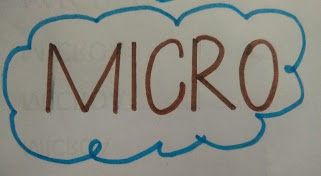Microeconomics and Macroeconomics
Economics studies how rational people make economic decisions. The decisions can made be individuals, a firm, an industry, or even a government. Based on who is making the decision, Economics can be studied at two levels, Microeconomics and Macroeconomics.
What is Microeconomics?
In Microeconomics, the decisions of an individual economic unit or group of individuals are studied, such as the behaviour of an individual consumer, farmer, producer or firm.
In Microeconomics, we also study how these individual units interact among themselves in a specific market.
Microeconomics can be understood as getting a microscopic view of the economy.
What do we study in Microeconomics?:
In Microeconomics we study a variety topics such as
- Determination of demand and supply of a particular good (let’s say ice-cream)
- Determination of price of a good
- Effect of price change on consumers and sellers
- Consumer behaviour and equilibrium
- Producer behaviour and equilibrium
- Profit and costing of a firm
- Labour employed in a firm
What is Macroeconomics?
Macroeconomics studies the whole economy. It studies the aggregate values of economic variables such as the National Income of a country, General Price level in a nation.
Macroeconomics can be understood as getting a telescopic view of the economy.
What do we study in Macroeconomics?:
In Macroeconomics we study a variety topics such as
- Determination of aggregate demand and aggregate supply in an economy.
- General Price Level of an economy
- Unemployment in an economy
- Trade cycles in an economy
- Determination of Rate of Interest
- Exports and Imports in an economy
- Monetary and Fiscal Policies of the government
- In Microeconomics, the decisions of an individual economic unit or group of individuals are studied, such as the behaviour of an individual consumer, farmer, producer or firm, for example Determination of demand and supply of a particular good (let’s say ice-cream)Determination of price of a good.
- Macroeconomics studies the whole economy. It studies the aggregate values of economic variables such as the National Income of a country, General Price level in a nation, for example Determination of aggregate demand and aggregate supply in an economy, General Price Level of an economy.



